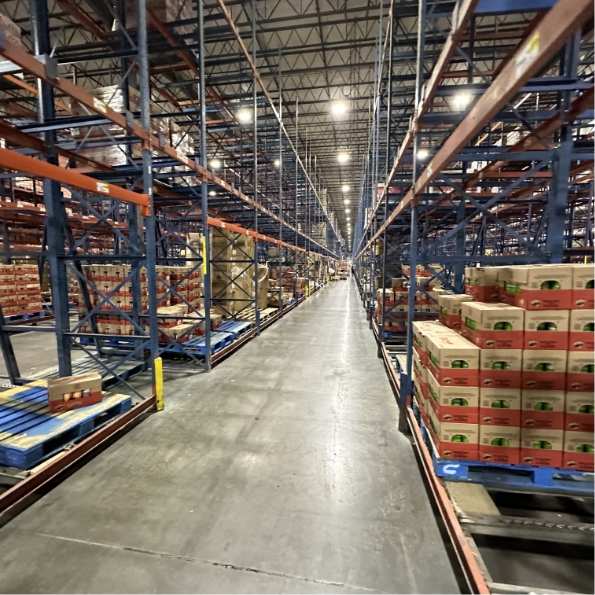Severe Weather Preparedness: Are You Ready for this Year’s Weather?

As we enter March, we also enter the season of storms, hurricanes, tornadoes and more. As we know, severe weather can introduce so many unexpected challenges that could hinder and disrupt the ability to provide services. As we anticipate the beginnings of unpredictable weather, the need for preparedness comes into play. What can you do for your facility to ensure that you make it through another season of severe weather?
This blog will discuss some of the most common challenges that facilities could face due to severe weather, what you can do to make sure you’re ready for another severe weather season, and how Sasser Restoration can assist in a swift recovery and be your ally during times of need.
What are Some of the Most Common Challenges Facilities Face During Severe Weather?
Severe weather doesn’t choose where it hits, it just happens. Regardless of the industry you serve, there is always a risk of severe weather disrupting your services. Whether you work in hospitality, government, education, healthcare, or own a commercial business, it’s important to consider the dangers that you could be facing when disaster strikes. So, what kinds of challenges does severe weather bring?
#1: Property Damage
The most common challenge that industries face, especially during tornado and hurricane season, is that of property damage. Damage to the infrastructure leads to a ripple effect of challenges. For one, financial impact can cause a strain on the overall facility itself, and it may affect staff as well. In addition to this, depending on the damage and process taken, recovery time may take longer than expected, thus increasing operational downtime.
Take commercial businesses, or educational institutions, for example. Extended downtime will limit a commercial business’ productivity, ultimately leading to profit loss. With an educational institution, downtime could lead to interruptions in classes and campus activities or inhibit students from receiving essential services. Property damage ultimately can affect every single aspect of a facility, so it’s important to keep these challenges in the back of your head in the case of severe weather.
#2: Service Interruption
Service interruption triggered by severe weather can cause a significant impact to several industries, creating more challenges than expected. Consider the hospitality industry. Within’ the hospitality industry, being able to provide adequate service to clients is one of the top priorities. When there is a disruption in essential services, such as power or water, it can compromise overall guest satisfaction and safety. No water means no operating showers or sinks, no power means no heating, no air conditioning, no Wi-Fi, no lighting, and more. With these essential services not functioning properly, this could lead to reservation cancellations and major revenue loss. Within’ this sector, a rapid response plan can minimize the negative impact that service interruptions can cause.
#3: Power Outages
Power outages resulting from severe weather can pose serious and critical challenges to facilities, such as the multifamily and healthcare industry. Within’ the multifamily industry, residents may not only face inconveniences, but they could also face safety risks due to the loss of heating, air conditioning, lighting, and essential resources. The lack of available elevators due to power outages may also cause an issue for disabled residents as well. Power outages can also cause severe impacts on healthcare facilities. They can jeopardize patient care by putting a stop to medical equipment. Tools like ventilators, heart monitors, incubators, and more can stop functioning within’ a second. Swift action becomes imperative in a situation like this.
How to Prepare Yourself for 2024’s Severe Weather
There are many things you can do to ensure you and your facility are prepared for this year’s severe weather. For one, having a comprehensive and thorough emergency plan will help you know exactly what to do when disaster strikes. In addition to this, it’s important to define what roles and responsibilities certain team members will uphold during times of crisis. This is crucial, as your staff will be aware of who to contact during urgent situations. It is also important to take the time to understand what needs your facility may have. If you have equipment that may already be faulty or infrastructure that needs work, act now before it’s too late. Finally, conducting drills and training sessions for staff is critical in knowing what to do during a weather emergency. Familiarizing your staff by being equipped and prepared in case of a tornado or hurricane can help them understand exactly what they need to do and when they need to do it, preparing you and your facility for any type of situation.
How Sasser Can Help Bring Your Building Back to Life
After a natural disaster strikes, it’s important to know what the next steps are. Here at Sasser Restoration, we will help you step by step. During times of crisis, we know there are moments of discouragement, but we focus on getting your facility back up and running in no time. With our network of first responders and our detailed emergency services, Sasser Restoration is here to be your trustworthy ally during times of need. With our in-depth services ranging from water damage mitigation to fire damage recovery, Sasser Restoration is ready and equipped to respond to your restoration services once receiving an emergency call. To find out more about our restoration services, check out our website, or give us a call at (844) 449-1144. Let us bring your building back to life.
Contact a Sasser Professional


